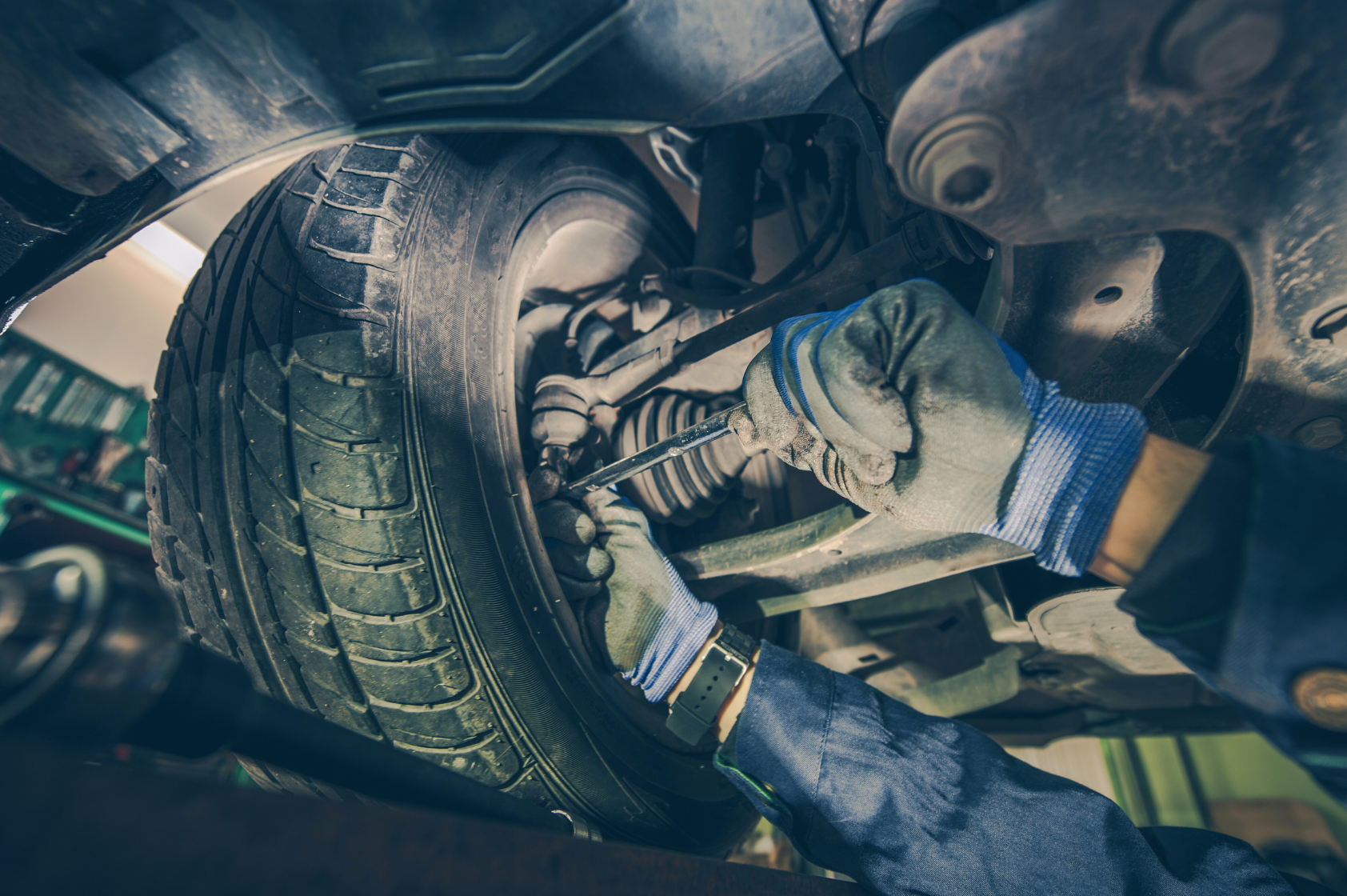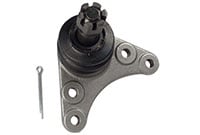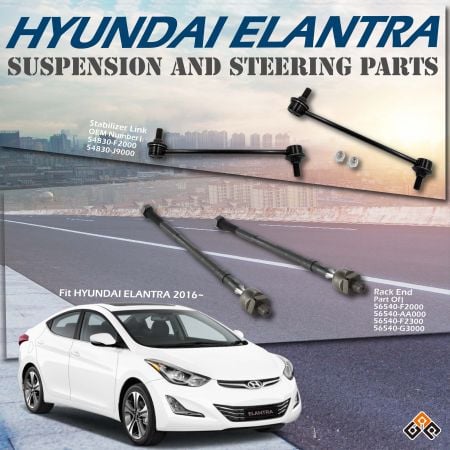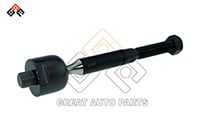Upper vs. Lower Control Arms: Which One Needs Replacement?
Your vehicle’s suspension system is a finely tuned network of components that work together to give you a smooth ride, stable handling, and precise steering. At the core of this system are the control arms—those unassuming yet crucial parts that connect the wheels to your car's frame, allowing the suspension to move freely while keeping the wheels aligned.
But when something goes wrong with your suspension, how do you know if the upper control arm, the lower control arm, or both need replacement? Understanding the roles of these components, their wear patterns, and when to replace them can save you money and ensure your car stays safe and stable on the road.
The Role of Control Arms in Your Suspension
Control arms, often called A-arms due to their shape, serve as the link between the vehicle’s frame and the wheels. They allow the wheels to move up and down independently while maintaining proper alignment, which is key to a smooth ride. There are two types of control arms: upper and lower. Together, they manage how your car handles corners, absorbs bumps, and responds to the driver’s steering.
For a more detailed breakdown of how control arms function and their importance in vehicle suspension, you can refer to another one of our posts, "What Do Control Arms Have to Do with Your Company’s Bottom Line?", where we cover the differences between upper and lower control arms and how they contribute to vehicle stability.
Both upper and lower control arms are fitted with bushings and ball joints that allow for flexible movement while minimizing noise and vibrations. These components, however, wear down over time, leading to the need for replacement.
How Long Do Control Arms Last
Control arms are built to be durable, but like all suspension components, they don’t last forever. On average, control arms should last between 90,000 and 100,000 miles, depending on your driving habits and road conditions. If you regularly drive on rough, uneven terrain or live in an area with harsh weather conditions, the lifespan of your control arms may be shortened due to the added stress on your vehicle’s suspension.
Factors that influence control arm lifespan
| Factors Affecting Control Arm Wear | Description |
| Driving Conditions | Frequent driving on rough roads or off-road terrains increases wear on the control arms, particularly on the bushings and ball joints. |
| Vehicle Type | Heavier vehicles like trucks and SUVs put more strain on suspension components, leading to faster wear. |
| Regular Maintenance | Regular suspension maintenance, including wheel alignments, helps extend the life of control arms. |
While control arms are generally designed to last for many years, regular inspections are key to catching signs of wear before they become serious problems. If you hear clunking noises, notice uneven tire wear, or experience steering vibrations, it might be time to inspect your control arms—even if you haven’t hit that 90,000-mile mark yet.
How Do You Know When It’s Time for a Replacement
Control arms, like any other suspension component, are prone to wear and tear, especially if you frequently drive on uneven or rough roads. Knowing the signs of a failing control arm can help you catch issues early and avoid further damage to your vehicle. Here are some of the key indicators:
| Symptoms of a Failing Control Arm | Description |
Clunking or Popping Noises | Hearing clunking sounds when going over bumps or turning indicates worn control arm bushings or ball joints. |
Uneven Tire Wear | A failing control arm can cause misalignment, leading to uneven tire wear, especially on the inside or outside edges. |
Steering Vibrations | Vibrations felt through the steering wheel, especially at high speeds, suggest a loose or damaged control arm. |
Poor Handling | Unstable vehicle behavior during cornering or braking indicates a worn control arm, affecting suspension stability. |
If you notice any of these symptoms, it's a clear sign that you need to have your suspension inspected—and potentially your control arms replaced.
Upper vs. Lower Control Arms: Which One Goes First
While both the upper and lower control arms can wear out, the lower control arm typically bears the brunt of the wear due to the heavier loads it supports. The lower arm handles most of the vehicle’s weight, and its bushings and ball joints are more prone to wear over time. However, that doesn’t mean the upper control arm won’t need attention.
Here’s a breakdown of when each control arm is more likely to fail:
| Control Arm Type | Symptoms and Issues |
| Lower Control Arm | Excessive body roll, poor handling over bumps, or instability during braking likely indicate lower control arm issues. They are more susceptible to damage due to road debris and general wear. |
| Upper Control Arm | Although less prone to wear, upper control arms can develop issues. Look for popping noises when turning or excessive play in the steering, which may indicate instability, especially when cornering. |
Can You Replace Just One Control Arm
In most cases, you can replace only the control arm that’s showing signs of wear. However, it’s important to consider a few factors:
- Even Wear:
Both control arms (upper and lower) experience similar driving conditions, meaning if one is worn out, the other might not be far behind. Replacing both at the same time could save you money on labor costs down the road. - Alignment Issues:
After replacing a control arm, especially the lower one, a wheel alignment is typically necessary to ensure your vehicle handles properly. Replacing only one arm may temporarily solve the issue but could lead to more frequent alignment adjustments.
What’s the Cost of Replacing Control Arms
The cost of replacing control arms can vary depending on your vehicle’s make and model. Typically, replacing a single control arm (either upper or lower) costs between $220 and $530, with labor adding another $150 to $200 to the bill. Replacing both control arms simultaneously can sometimes save on labor costs, especially if an alignment is needed afterward. (Prices are for reference only.)
For those who are DIY enthusiasts, replacing a control arm yourself can save money, but it’s an intermediate-level repair. You’ll need the right tools, including a ball joint separator, torque wrench, and jack stands, and you must ensure the vehicle is safely supported during the process.

Should You Replace Both Upper and Lower Control Arms at the Same Time
While it’s not always necessary to replace both the upper and lower control arms simultaneously, it’s often recommended in certain scenarios:
- High Mileage Vehicles:
If your vehicle has high mileage, both control arms may be showing signs of wear, even if one is more damaged than the other. Replacing both ensures that your suspension system is fully restored and prevents future issues. - Long-Term Cost Savings:
Since control arm replacements require an alignment, doing both at once can reduce the need for future alignment services, saving you time and money.
Why Wheel Alignment Is Crucial After Control Arm Replacement
After replacing a control arm, it’s not just about getting the new part installed—wheel alignment is critical to ensure your vehicle handles properly and safely. Replacing control arms affects the suspension geometry, which directly influences the position and angle of your wheels. Without proper alignment, even the best control arm replacement won’t perform optimally.
For more insights into how suspension issues, including control arm problems, can affect your vehicle, check out our related blog post, "Suspension Noise Alert: Could Control Arms be the Cause?".
Here’s why wheel alignment matters after a control arm replacement:
| Reasons Why Wheel Alignment Matters After Control Arm Replacement | Description |
| Restoring Proper Handling | Misaligned wheels can cause poor handling, making the vehicle feel unstable. An alignment ensures smooth and precise handling. |
| Preventing Uneven Tire Wear | Misaligned wheels lead to uneven tire wear, which can result in premature tire replacement. Proper alignment extends tire lifespan. |
| Suspension Integrity | A misaligned vehicle puts stress on other suspension components, leading to premature wear. An alignment ensures all parts work harmoniously. |
| Maximizing Fuel Efficiency | Proper wheel alignment can improve fuel efficiency by reducing resistance, allowing the engine to work less and save fuel over time. |
In short, never skip the wheel alignment after a control arm replacement. It’s a small investment that pays off by ensuring your vehicle handles correctly, your tires last longer, and your suspension system stays in top shape. After all, control arms and wheel alignment go hand-in-hand to keep your car performing at its best.
Invest in the Right Control Arm with Great Auto Parts
When it comes to replacing your control arm, it's not just about fixing a problem—it's about choosing a part that will ensure long-lasting performance, safety, and reliability. At Great Auto Parts, we pride ourselves on providing top-tier suspension and steering components that stand the test of time.
Here’s Why Choose Control Arms Manufactured by Great Auto Parts:
- Expertise
Our team has years of experience in the automotive industry, which means we understand the intricacies of your vehicle's suspension system. Whether it's an upper or lower control arm, our experts can provide you with the best advice and ensure you get the right part for your vehicle. - Quality Products
We prioritize quality in every part we manufacture. At Great Auto Parts, we use only the highest-quality materials and advanced manufacturing processes to produce durable and reliable control arms. This means you get a product designed to withstand the stresses of daily driving and offer superior performance. - Custom Solutions
We know that every vehicle is different, and sometimes off-the-shelf parts may not be the perfect fit. That’s why we offer customized solutions to meet your specific needs, ensuring your vehicle gets the right control arm for optimal performance and safety. - Exceptional Customer Service
At Great Auto Parts, our dedicated customer service team is always here to assist you. Whether you have questions about the product, need help with installation, or want more information about our range of steering and suspension parts, we’re ready to provide the support you need.
Choose Great Auto Parts for your control arm replacement and ensure your vehicle continues to perform at its best. With our expertise, high-quality products, custom solutions, and exceptional customer service, you can drive with confidence knowing your vehicle is equipped with the best parts on the market.




